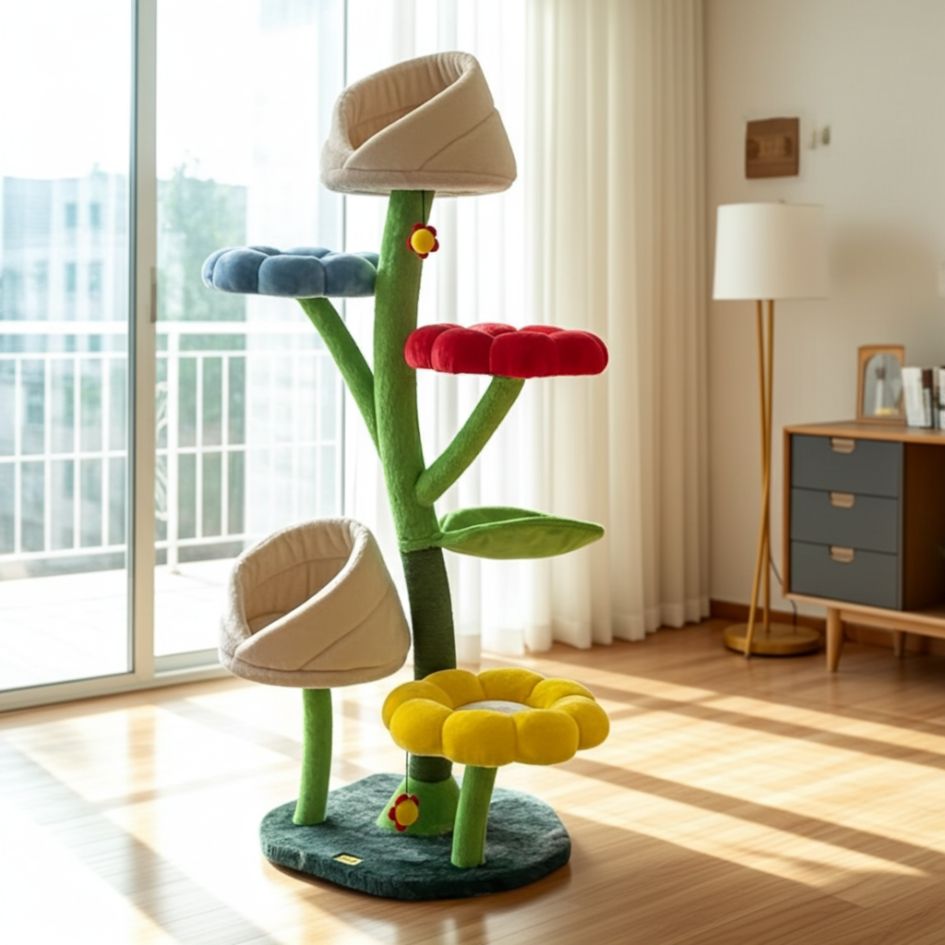Choosing the right cat litter is essential for cat owners. It not only affects the cleanliness of the litter box but also the welfare of the cat and the air quality in the home. In this article, we answer the most common questions about cat litter and provide valuable tips for optimal use.
1. Cat litter that doesn't stink – Which is odorless?
"No one wants unpleasant odors in their home. Cat litter can help to absorb odors, but not all litter is equally effective."
✅ Clumping cat litter with activated carbon or bentonite – Absorbs moisture quickly and efficiently binds odors.
✅ Silicate Cat Litter – Has a high absorbency and neutralizes odors particularly well.
✅ Natural litter made from wood or plant fibers – Has natural antibacterial properties and neutralizes odors in an environmentally friendly way.
✅ Baking powder or special scattering additives – Can help to additionally bind odors.
💡 Tip: To keep the litter as odor-neutral as possible, it should be sifted and replaced regularly.
2. Cat litter that doesn't create dust – Which is the best?
Dusty cat litter can burden the airways of both cats and humans. Especially for cats with sensitive airways or allergies, low-dust litter is important.
🚫 Avoid dusty litter:
- Cheap clumping litter made from bentonite can be very dusty.
- Fine silica litter can generate dust when filling or scratching.
✅ Dust-Free Alternatives:
- Coarse clumping litter – Contains larger particles and produces less dust.
- Silicate litter with large crystals – Dusts less than fine silicate granulate.
- Wood or plant litter – Made from compressed wood fibers or corn granules and is an environmentally friendly, low-dust alternative.
💡 Tip: When pouring the litter, proceed slowly and keep the bag as close to the litter box as possible to avoid dust swirling.
3. When should cat litter be changed?
To keep the litter box hygienic, cat litter should be cleaned and replaced regularly.
🔹 Daily Cleaning:
- Cat and wet clumps should be removed daily.
- With clumping litter, the remaining litter stays fresh longer.
🔹 Partial Change:
- Clumping litter: Add some fresh litter weekly to maintain the volume.
- Non-clumping litter: Depending on odor development, partially renew every 3–5 days.
4. When should cat litter be completely changed?
Even with regular cleaning, the entire litter must be replaced at certain intervals.
🔸 Clumping litter: Completely change every 2–4 weeks.
🔸 Non-clumping litter: Completely renew every 5–7 days.
🔸 Silicate litter: Can last 2–4 weeks depending on the manufacturer before a complete change is necessary.
💡 Tip: When changing the litter box, thoroughly clean it with warm water and a mild soap – avoid harsh cleaners, as cats are sensitive to smells.
5. Which cat litter is the best?
The ideal cat litter depends on various factors:
✔ Odor Control: Silicate or bentonite clumping litter with activated carbon.
✔ Dust-free: Wood or plant litter, coarse clumping litter.
✔ Sustainability: Biodegradable natural litter made from wood, corn, or coconut.
✔ Comfort for the cat: Soft, fine-grained clumping litter is often preferred.
🐾 Best choice for multi-cat households: Low dust, highly absorbent clumping litter.
🐾 Best choice for sensitive cats: Silica or plant litter without fragrances.
💡 Tip: Some cats are picky – it can help to test different types of litter to find out which one is best accepted.
6. How do you dispose of cat litter properly?
Depending on the type of scatter, there are various disposal options:
✅ Bentonite or Silicate Litter:
- Always dispose of in residual waste – these types of litter clog drains and are not biodegradable.
✅ Plant or wood mulch:
- Can be disposed of via the organic waste bin (depending on municipal regulations).
- Small quantities may often be disposed of via the toilet – but only if the manufacturer expressly permits it.
🚫 Attention:
- Cat litter never belongs in the yellow bag or the paper bin.
- In the toilet only when explicitly allowed, to avoid clogs.
💡 Tip: Always pay attention to the disposal instructions on the packaging and follow the local waste regulations.
Conclusion: The right cat litter for a clean and odor-free environment
Choosing the right cat litter is crucial for hygiene, comfort, and odor control. Low-dust, well-clumping, and odor-absorbing types of litter create a pleasant environment for both the cat and the owner.
🔹 Avoid odor: Clumping litter with activated charcoal or silica litter.
🔹 Dust-free alternatives: Wood or coarse clumping litter.
🔹 Regular change: Partially refill and completely renew every 1–4 weeks depending on the spreader.
🔹 Observe disposal: Residual waste for mineral litter, organic bin, or toilet (only for approved natural litter).
With the right care and choice of cat litter, the litter box remains hygienic, odor-free, and pleasant for the furry friend. 🐾😊






